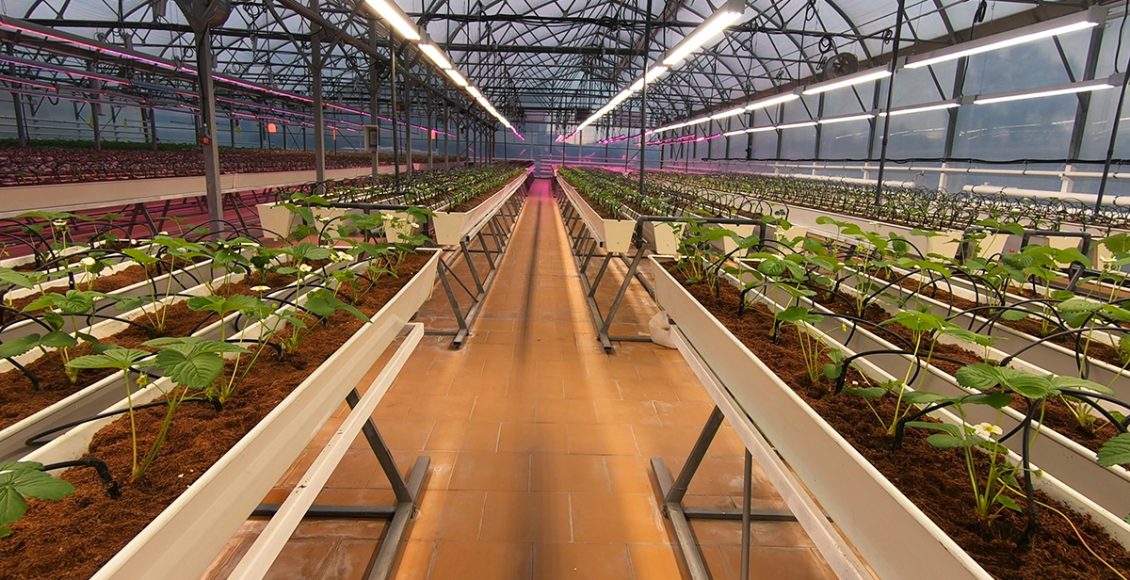
Accelerating crop improvement: The power of integrated speed breeding
As the global food system faces climate shocks, pest outbreaks, and malnutrition challenges, traditional crop breeding, which often takes 8–12 years for variety development, is proving too slow. Nearly 50% of this timeline, approximately 4 to 6 years, is spent on developing parent lines, with the remaining time dedicated to hybrid development and multi-location evaluations. A transformative solution lies in integrated speed breeding, which combines rapid generation advancement with cutting-edge tools like genomics, gene editing, Marker Assisted Breeding (MAB), Doubled haploids (DH), AI-based phenotyping, and automation. This convergence enables breeders to respond with speed, precision, and resilience, saving nearly 30% to 40% of the time required to develop hybrids and accelerating the development and delivery of climate-smart crops.
Optimizing growth with controlled environment ecosystems
Controlled Environment Ecosystems (CEEs) are central to integrated speed breeding, offering precise control over light, temperature, humidity, and nutrients to accelerate plant growth and enable year-round breeding. These environments facilitate accelerated growth cycles and provide stable conditions for evaluating genetic traits, minimizing seasonal variability. A compelling example is the SpeedFlower protocol developed by the International Rice Research Institute (IRRI) that optimizes photoperiod, temperature, and nutrient regimes to dramatically shorten rice generation time, supporting up to five generations per year, significantly shortening breeding timelines for climate-resilient varieties.
Integrating Speed Breeding and Genomic Selection (SpeedGS)
Integrating genomic selection with speed breeding has transformed modern breeding strategies by enhancing both efficiency and precision. Genomic selection enables breeders to analyze large genetic datasets, accurately predicting and selecting traits such as drought tolerance, disease resistance, and high yield potential. Speed breeding complements this by drastically reducing the time required for each breeding cycle in the parent lines development timeline. This integration often referred as SpeedGS, is now being widely adopted to unlock faster and higher genetic gains, especially for complex traits like stress resilience and yield. An example comes from spring wheat, where researchers used genomic models to predict yield traits and combined this with controlled-environment speed breeding. This setup allowed up to six generations per year. This not only shortened breeding time but also improved genetic gains for complex traits like yield. This integration is now being adopted across breeding programs of multiple crops to unlock faster and higher genetic improvements, especially for complex traits like yield and stress resilience.
MABC & DH integration: Precision introgression at speed
Integrating speed breeding (SB) with advanced breeding techniques like marker-assisted backcrossing (MABC) and doubled haploid (DH) technology offers a powerful approach to accelerate crop improvement. MABC enables precise and efficient introgression of target traits into elite backgrounds, while DH allows rapid development of homozygous lines. When combined with SB, these methods become even more effective. SB shortens generation cycles, allowing quicker progression through backcross generations in MABC and faster multiplication of DH lines. Unlike DH, which can be genotype-dependent and resource-intensive, SB is more flexible and scalable. These integrated methods enable faster trait fixation, accelerated product development, and higher genetic gain in less time.
Gene editing and speed breeding: Precision meets agility
Gene editing and speed breeding are no longer futuristic concepts but essential tools in modern agriculture. Their integration is revolutionizing plant breeding, offering hope for a more sustainable, resilient, and productive food system. Gene editing technologies allow breeders to introduce specific beneficial traits in a much more targeted and efficient manner. By integrating gene editing with speed breeding, breeders can rapidly create new crop varieties with enhanced disease resistance, improved nutritional profiles, or other valuable traits. The ExpressEdit technology provides greater precision, accelerating the development of high-performing crop varieties within a shortened timeframe. ExpressEdit is an innovative approach that integrates gene editing with speed breeding, effectively bypassing the bottleneck of traditional tissue culture and plant regeneration. This enables faster and more efficient trait integration and accelerates the development of high-performing crop varieties.
AI-driven phenotyping: Intelligent selection at speed
AI-driven phenotyping is transforming trait evaluation by automating data collection and boosting accuracy. Advanced imaging technologies like hyperspectral sensors and deep learning models rapidly assess plant traits, reducing manual labor. Remote sensing provides real-time data on plant growth and stress responses. Combined with genomics, this enables faster identification of high-performing genotypes. AI algorithms extract patterns and predict optimal breeding strategies. Integrated with speed breeding (Speed-Phenomics), this ensures that only the most promising candidates move forward. Emerging tools like PanicleNeRF (3D panicle modeling using AI and smartphones) and IPENS (real-time phenotyping for rice and wheat) are streamlining selection in both field and controlled environments.
Automation and Robotics: Scaling the speed breeding pipeline
A new generation of automation and robotics supports these data-intensive, rapid-cycling breeding systems. Automated systems can now manage routine yet critical tasks such as seed planting, growth monitoring, environmental control, and phenotypic data collection. These technologies reduce the need for manual labor, improve precision, and allow researchers to scale breeding operations efficiently. Integrated with AI and CEEs, robotics platforms can respond dynamically to crop development, adjusting inputs like irrigation or lighting in real-time based on plant feedback. This not only boosts throughput but also ensures consistent environmental conditions that are essential for reliable phenotypic assessments and trait stability across cycles.
The future of crop improvement is integrated and intelligent
Speed breeding is not just about speed; it’s about precision, efficiency, and smarter decision-making in crop development. It is no longer a stand-alone innovation; it is a hub around which the future of crop improvement revolves. By combining rapid generation advancement with genomic selection, gene editing, AI-powered phenotyping, and automation, breeders are delivering climate-resilient, high-performing crops in record time. This integrated approach is already delivering results in multiple crops where advanced breeding programs are shortening development timelines, increasing precision, and enabling faster responses to environmental and market challenges.
What once took a decade can now be done in just a few years, redefining what’s possible in global crop improvement.
References:
- https://www.irri.org/news-and-events/news/irri-develops-first-speed-breeding-protocol-rice
- Strategies for accelerating genetic gains in crop plants: special focus on speed breeding-Physiol Mol Biol Plants . 2022 Nov 6
- Genomics-assisted speed breeding for crop improvement: present and future- Front. Sustain. Food Syst., 08 April 2024
- PanicleNeRF: low-cost, high-precision in-field phenotypingof rice panicles with smartphone
- IPENS: Interactive Unsupervised Framework for Rapid Plant Phenotyping Extraction via NeRF-SAM2 Fusion
Author

Connect with Author at: E-mail agribusiness@sathguru.com
 Grow Beyond
Grow Beyond 

